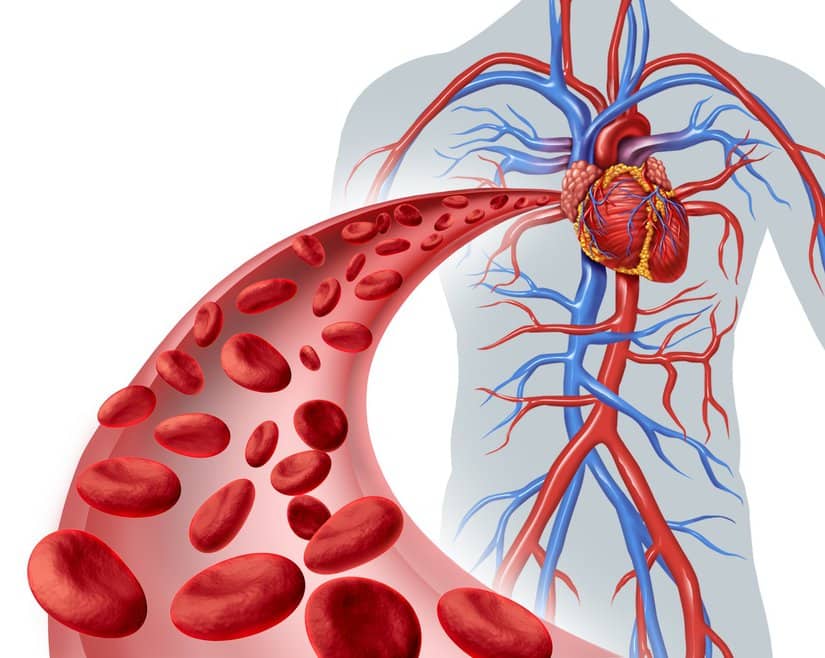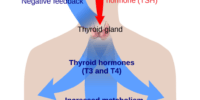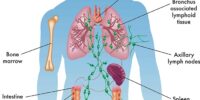Blood Composition And Circulatory Pathway Explained

Blood is a vital component of the human body, responsible for delivering oxygen, nutrients, and immune cells to tissues throughout the body. The circulatory system, composed of the heart, blood vessels, and blood, works together to ensure that oxygenated blood is delivered to tissues and deoxygenated blood is returned to the lungs for reoxygenation. Understanding the composition and circulatory pathway of blood is crucial for comprehending the functioning of the human body.
Blood is composed of several components: red blood cells, white blood cells, platelets, and plasma. Red blood cells, also known as erythrocytes, are responsible for carrying oxygen from the lungs to tissues throughout the body. White blood cells, or leukocytes, are involved in fighting infections and foreign invaders in the body. Platelets, or thrombocytes, are necessary for blood clotting when an injury occurs. Plasma, the liquid component of blood, contains nutrients, hormones, and waste products and is involved in regulating body temperature.
Together, these components work in harmony to ensure that the body is supplied with the necessary oxygen and nutrients, and that waste products are effectively removed.
Key Takeaways
- Blood is composed of red and white blood cells, platelets, and plasma, each with specific functions in the body.
- The circulatory system delivers oxygen and nutrients to tissues throughout the body and ensures deoxygenated blood is returned to the lungs for reoxygenation.
- Capillaries are the tiniest blood vessels and facilitate the exchange of nutrients, gases, and waste products between blood and surrounding tissues.
- The cardiovascular system is powered by the pumping action of the heart and regulates blood flow through the diameter of blood vessels, viscosity of blood, and pressure generated by the heart.
Understanding Blood Components
A comprehensive understanding of blood components is essential in grasping the intricate mechanisms that regulate the circulatory system, thereby emphasizing the critical importance of studying these components with utmost precision and accuracy.
Blood is a complex fluid that is composed of various components, including red blood cells, white blood cells, platelets, and plasma. Each of these components plays a vital role in maintaining the health and functionality of the circulatory system.
Red blood cells, also known as erythrocytes, are responsible for carrying oxygen from the lungs to the body tissues. These cells contain hemoglobin, a protein that binds with oxygen molecules and transports them throughout the body.
White blood cells, or leukocytes, are responsible for fighting infections and diseases.
Platelets, on the other hand, are responsible for blood clotting, which helps to prevent excessive bleeding in case of injury.
Finally, plasma is a straw-colored fluid that forms the liquid component of blood and contains various proteins, electrolytes, and other components that are necessary for maintaining blood pressure and ensuring the proper functioning of the circulatory system.
A comprehensive understanding of these blood components is crucial in identifying and treating various blood-related disorders and diseases.
Red Blood Cells: Carrying Oxygen
Erythrocytes, or red blood cells, are specialized cells designed to transport oxygen throughout the body. They are biconcave disks, which allows for a larger surface area for oxygen exchange.
Red blood cells are produced in the bone marrow and contain the protein hemoglobin, which binds to oxygen. The circulatory system delivers oxygen-rich blood to tissues and organs, where oxygen is released from hemoglobin and diffuses into cells. Carbon dioxide, a waste product of cellular respiration, is then carried back to the lungs by red blood cells to be exhaled.
Red blood cells have a lifespan of approximately 120 days and are constantly being replaced by new cells. The production of red blood cells is regulated by erythropoietin, a hormone produced by the kidneys. In cases of anemia, a decrease in the number of red blood cells, erythropoietin production is increased to stimulate the bone marrow to produce more cells.
Understanding the role of red blood cells in oxygen transport is crucial in the diagnosis and treatment of various diseases, such as anemia and hypoxia.
White Blood Cells: Fighting Disease
Leukocytes, also known as white blood cells, play a crucial role in the body’s defense against pathogens and foreign invaders. They are a type of blood cell that is produced in the bone marrow and circulate in the bloodstream. Unlike red blood cells, which primarily carry oxygen, white blood cells are responsible for identifying and destroying harmful bacteria, viruses, and other pathogens that enter the body.
There are several different types of white blood cells, each with a specific function. These include neutrophils, eosinophils, basophils, lymphocytes, and monocytes. Neutrophils are the most common type of white blood cell and are responsible for the initial response to an infection. Eosinophils play a role in fighting off parasitic infections and allergies, while basophils release histamine and other chemicals that contribute to inflammation. Lymphocytes, on the other hand, are involved in the production of antibodies and the destruction of infected cells. Finally, monocytes are responsible for phagocytosis, the process of engulfing and digesting foreign particles and dead cells. To better understand the roles of these different white blood cells, refer to the table below.
| White Blood Cell Type | Function |
|---|---|
| Neutrophils | Initial response to infection |
| Eosinophils | Fighting parasitic infections and allergies |
| Basophils | Release histamine and other chemicals that contribute to inflammation |
| Lymphocytes | Involved in antibody production and destruction of infected cells |
| Monocytes | Phagocytosis: engulfing and digesting foreign particles and dead cells |
Overall, white blood cells are a critical component of the body’s immune system, working to defend against harmful pathogens and foreign invaders. Understanding their functions and roles can help in the diagnosis and treatment of various diseases and infections.
Platelets: Blood Clotting
Platelets are essential in the process of blood clotting, which is crucial for preventing excessive bleeding and promoting wound healing. Platelets are tiny, colorless, and disc-shaped cells that are approximately 2-3 micrometers in diameter. They are formed in the bone marrow from megakaryocytes and circulate in the blood at a concentration of 150,000 to 400,000 per microliter.
When an injury occurs, platelets are activated and adhere to the site of injury, forming a temporary platelet plug. This plug serves as a barrier to prevent further blood loss while the body initiates the coagulation cascade to form a stable blood clot. Platelets release chemicals that activate other platelets, constrict blood vessels, and attract white blood cells to the site of injury.
Additionally, platelets also release growth factors that stimulate the growth of new blood vessels and promote tissue repair. Overall, the role of platelets in the clotting cascade is essential for maintaining hemostasis and promoting wound healing.
However, disorders that affect platelet function can lead to excessive bleeding or clotting. For example, platelet deficiencies can occur due to genetic disorders, medications, or autoimmune diseases. On the other hand, increased platelet activation and aggregation can cause thrombosis, which can lead to heart attacks and strokes.
Therefore, understanding the role of platelets in hemostasis and thrombosis is crucial for the diagnosis and treatment of bleeding and clotting disorders.
Plasma: Regulating Body Temperature
Plasma, the liquid component of blood, plays a crucial role in regulating body temperature through its ability to transfer heat throughout the body. As the blood circulates, plasma absorbs heat from active muscles and organs and carries it to other parts of the body where it is needed. This process helps to ensure that the body maintains a constant internal temperature, which is essential for optimal cellular function.
Plasma also contains a variety of other substances that help to regulate body temperature. For example, hormones such as adrenaline and thyroxine can stimulate the body’s metabolism and increase heat production. Conversely, substances such as insulin and glucagon can help to regulate blood sugar levels, which can affect the body’s ability to generate heat.
By carefully balancing these different factors, plasma helps to ensure that the body maintains a stable internal environment that is conducive to overall health and well-being.
The Circulatory System: Arteries and Veins
The circulatory system is composed of a network of blood vessels, including arteries and veins, that transport oxygen, nutrients, and waste products throughout the body.
Arteries are blood vessels that carry oxygen-rich blood away from the heart and to the rest of the body. They have thick, muscular walls that are able to withstand the high pressure that occurs when the heart pumps blood through them. As arteries branch out into smaller vessels, they become arterioles, which are responsible for regulating blood flow to specific organs or body parts.
Veins, on the other hand, carry blood back to the heart after it has been depleted of oxygen and nutrients. Unlike arteries, veins have thinner walls and less muscle, which means they are not able to withstand high pressure as well. However, they have valves that prevent blood from flowing backward and help to keep it moving toward the heart. As veins get smaller, they become venules, which eventually lead back to the heart.
Together, arteries and veins work together to ensure that blood is circulated throughout the body efficiently and effectively.
Capillaries: The Link Between Arteries and Veins
Capillaries, the tiniest blood vessels in the body, play a crucial role in connecting arteries and veins and facilitating the exchange of nutrients, gases, and waste products between the blood and the surrounding tissues. These thin-walled vessels are only one cell thick, allowing for efficient diffusion of molecules between the blood and the surrounding tissues. Capillaries are found in large numbers throughout the body, with an estimated total length of over 60,000 miles in the average adult.
Capillaries are organized into networks called capillary beds, which are located throughout the body. Blood flows into a capillary bed through an arteriole and exits through a venule. The exchange of nutrients, gases, and waste products occurs in the capillary bed. The exchange is facilitated by the thin walls of the capillaries, which allow for efficient diffusion of molecules. In addition, the diameter of the capillary is small enough that red blood cells must pass through in single file, allowing for maximal exchange of molecules. The table below summarizes the key characteristics of capillaries.
| Characteristic | Description |
|---|---|
| Size | Smallest blood vessels in the body, only one cell thick |
| Structure | Thin-walled vessels that connect arteries and veins |
| Function | Facilitate the exchange of nutrients, gases, and waste products between the blood and surrounding tissues |
| Location | Found in large numbers throughout the body, organized into capillary beds |
Blood Flow: How It All Works Together
One of the most important functions of the cardiovascular system is to ensure that blood is properly transported throughout the body, delivering oxygen and nutrients to various tissues and organs. This is achieved through a complex network of blood vessels, including arteries, veins, and capillaries. Blood is constantly flowing through this network, powered by the pumping action of the heart.
Blood flow is regulated by a variety of factors, including the diameter of blood vessels, the viscosity of blood, and the pressure generated by the pumping action of the heart. Arteries carry oxygenated blood away from the heart, while veins carry deoxygenated blood back to the heart. Capillaries, the smallest blood vessels in the body, connect arteries and veins and allow for the exchange of nutrients and waste products between blood and surrounding tissues.
Overall, blood flow is a crucial aspect of the cardiovascular system, ensuring that the body’s tissues and organs receive the nutrients and oxygen they need to function properly.
Conclusion
In conclusion, blood composition and the circulatory pathway are essential elements of the human body that are responsible for maintaining good health.
Blood is composed of various components like red blood cells, white blood cells, platelets, and plasma, each with its unique functions. Red blood cells carry oxygen while white blood cells fight against diseases and infections. Platelets help in blood clotting, protecting the body from excessive blood loss, while plasma regulates body temperature.
The circulatory system consists of arteries, veins, and capillaries, which work together to transport blood throughout the body. The blood flow is a complex process that requires the proper functioning of each component of the circulatory system. Understanding how blood components work together is vital in diagnosing and treating various medical conditions.
Therefore, it is crucial to maintain a healthy blood composition and keep the circulatory system functioning correctly. A healthy lifestyle that includes regular exercise, a well-balanced diet, and adequate hydration can help achieve optimal blood composition and promote overall health.
In conclusion, the circulatory system is a complex network that plays a vital role in maintaining human health.








